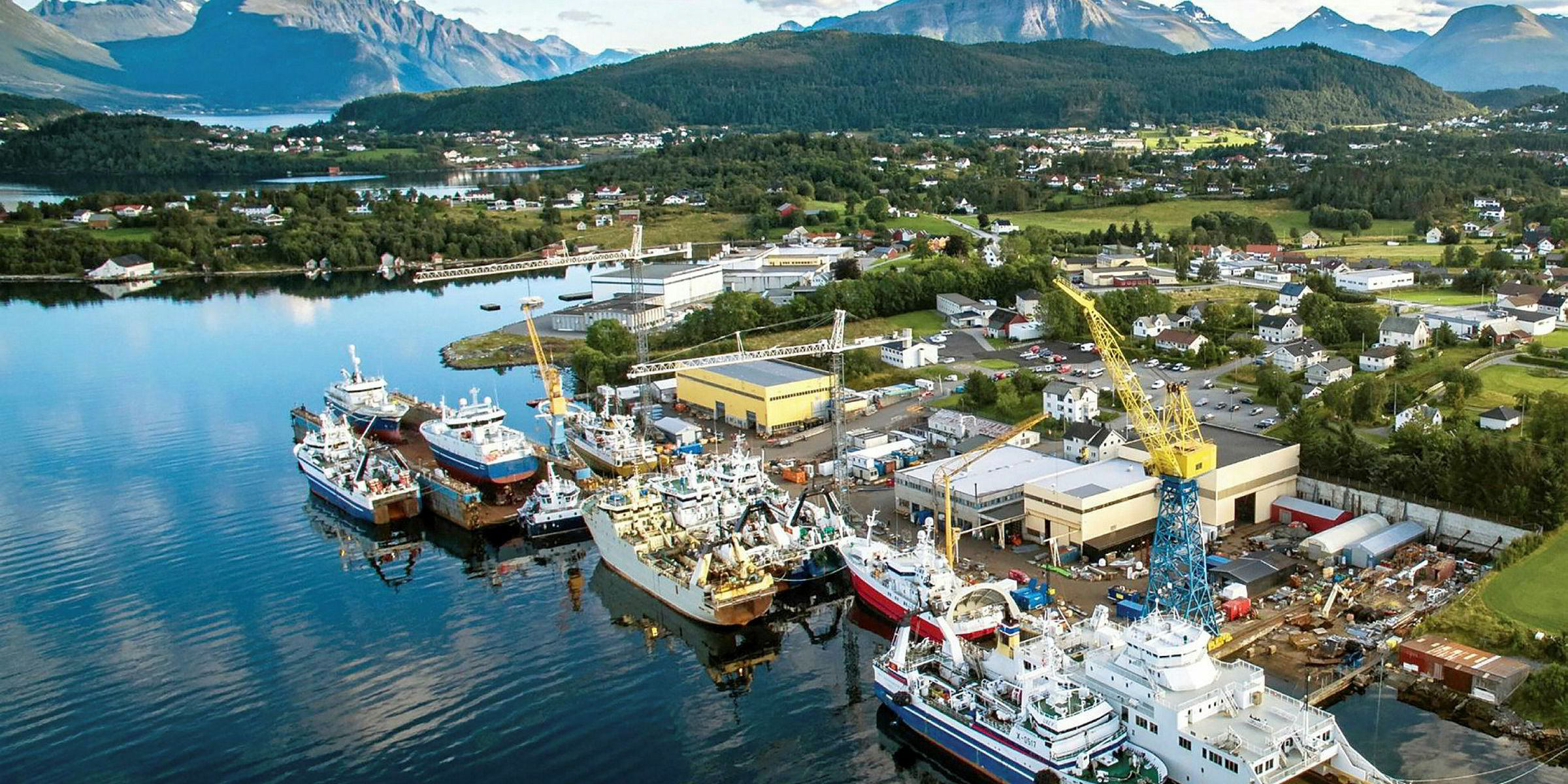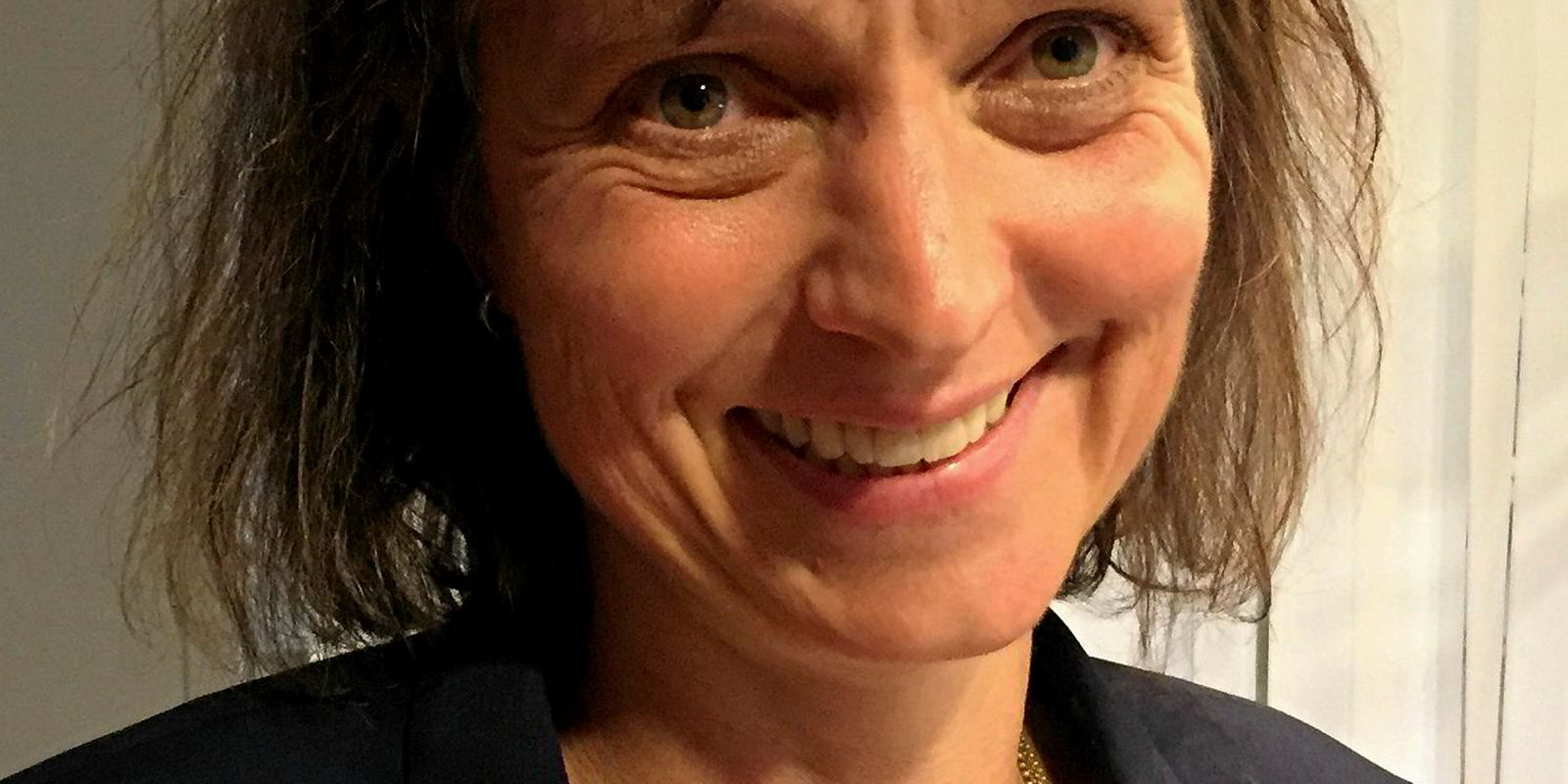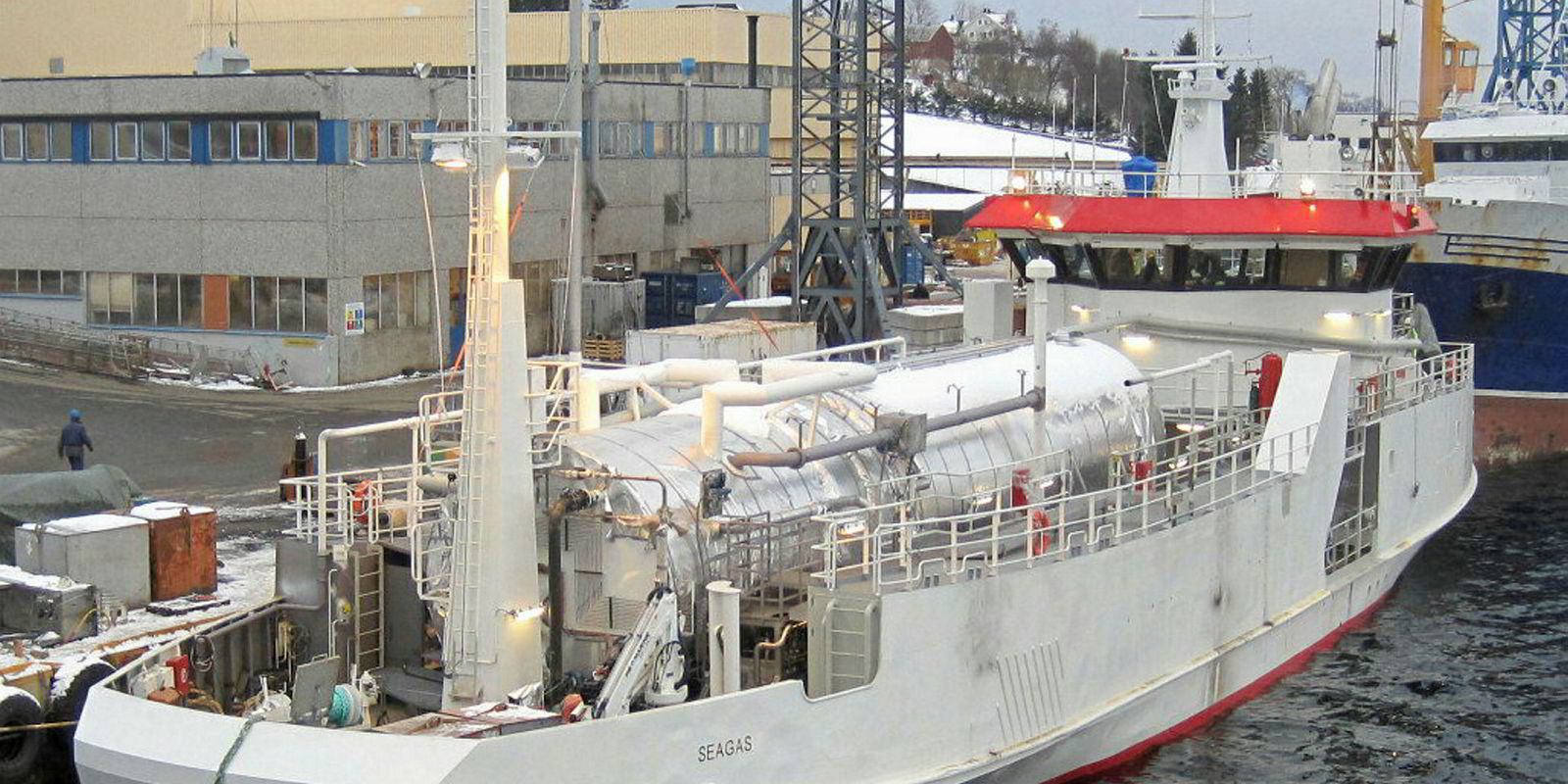Fiskerstrand Holding’s 69-year-old chief executive says innovation is one of his Norwegian group’s enduring values.
Rolf Fiskerstrand’s Fiskerstrand Verft was founded by his grandfather in 1909 and is one of only two shipyards in Norway that have been in continuous business since that time.
Now it is playing a leading role in the next wave of industry innovation.
Fiskerstrand believes fuel cells combined with batteries will be the next big leap for shipping as the Norwegian Public Roads Administration (NPRA) continues its campaign to modernise and drastically reduce the carbon footprint of the country’s huge network of ferry crossings.
He hopes Fiskerstrand’s HYBRIDship concept will be the winning solution in the concession competition being run by NPRA for the Hjelmeland-Nesvik-Skipavik crossing in Rogaland county.
The west coast yard is no stranger to cutting-edge shipping technology.
Sited in spectacular surroundings on the Ase Fjord, the yard is active in both repair and newbuildings. It specialises in car and passenger ferries, fishing and aquaculture vessels and green ship technology.
The group also includes Forde-based ship design company and ferry specialist Multi Maritime, which it owns outright.
“Our vision is sustainable maritime development and we really try to live up to that,” Fiskerstrand says.
The company got off to an early start in LNG eight years ago, then moved into battery drives and now hydrogen is topping the yard’s engineering agenda.
The impetus for Fiskerstrand’s HYBRIDship concept came as NPRA invited three qualified shipowners to tender for the 10-year contract earlier this year.
NPRA project manager Camilla Rohme tells TradeWinds the contract calls for three vessels, two fully electric ships and a hydrogen-electric development ferry. The electric pair are targeted to begin operating from March 2021 and the hydrogen hybrid from October the same year.
“The development ferry has to be at least 50% hydrogen powered,” Rohme says. The solution is completely up to the suppliers, including shoreside hydrogen supply and bunkering.
She says development sketches are required to be submitted later this month, with the deadline for final tenders slated for August next year.
“The aim is that the market will find the best solution,” Rohme adds.
Fiskerstrand is developing HYBRIDship with support from Norway’s Pilot-E financing scheme set up by the Research Council of Norway, Innovation Norway and Enova.
The goal of the NOK 70m ($8.8m) programme is to spur the creation of emissions-reduction technology across Norwegian industry.
“The overall aim of [HYBRIDship] is to realise a zero-emission propulsion system for crossings of 35 minutes plus,” Fiskerstrand says.
“We believe it will be the world’s first commercially operated ferry using a hydrogen-electric hybrid [driveline].”
He says the yard has had approaches from interested owners.
“But of course money talks. We have to see. Our hope is to be in the forefront,” he says.
He is nothing but committed. “I have an obligation to myself. I cannot retire until this project is completed,” he says.
The plan is to rebuild an existing, most likely diesel-electric, car ferry and complete tests by the end of 2019.
A decision on what vessel will be used has yet to be taken. It cannot be too old as the cost of rebuilding would be prohibitive, Fiskerstrand says.
As well as Multi Maritime on the design side, project partners include DNV GL, the Norwegian Maritime Directorate and the Norwegian Directorate for Civil Protection for safety approval and compliance with the International Code of Safety for Ships using Gases or other Low-flashpoint Fuels (IGF Code).
Independent research institution Sintef will work on maritime research and modelling; NEL Hydrogen on supporting production and supply; and Hexagon Composites for the hydrogen storage solution.
Fiskerstrand engineering manager Kare Nerem says the first phase kicked off at the start of this year and will run to the second quarter of 2018. It involves research and optimisation of the hybrid design and determining the pilot vessel, dubbed H2020.
The second phase will run from the third quarter of 2018 and will focus on the conversion and testing. “We aim to have the pilot ferry sailing at the end of 2019,” Nerem says.
He says a rebuild is quicker and much cheaper than a newbuilding, for which the yard would need financing.
“Right now we’re designing a newbuilding but later on you can use the technology on an older boat,” he says. “It’s a win-win situation both for us and the regulating authorities.”
Nerem notes the fuel cell principle dates back to 1839 so the technology is not new. The US’ Gemini spacecraft used fuel cells back in the mid-1960s. They have also been used in German submarines since the 1990s, as well as more recent applications on buses and trains.
Fiskerstrand says fuel cell equipment in the required megawatt class is already available in the market — in Germany, Sweden and Canada — while pressure tanks are “more or less ready”.
The vessel will not be a plug-in, he adds. “The battery will be charged by the fuel cells but it depends on the size of the tanks and operational profile.”
Nerem says the projected volume of hydrogen required onboard will be 500 kilograms to 700 kilograms, with the storage tanks weighing 10 tonnes to 15 tonnes.
Fiskerstrand says it is too soon to reveal more details. “We were the first to start. Now others are coming up so we have to be a bit careful.”
“The equipment is there, it’s just to scale it. Putting it onboard a vessel is the big issue,” he says.
The conversion work will take six to eight months, and will be pushed into 2020 if required, Fiskerstrand says. “You have to have a deep respect for the task. If it’s a good idea to use one more year, we will.”
It is not only the market potential but “there are people involved, so we have to be very sure”.
Everything boils down to safety.
“Delivery will depend on how smooth the road is,” Fiskerstrand says. “We can’t gamble on this.”





